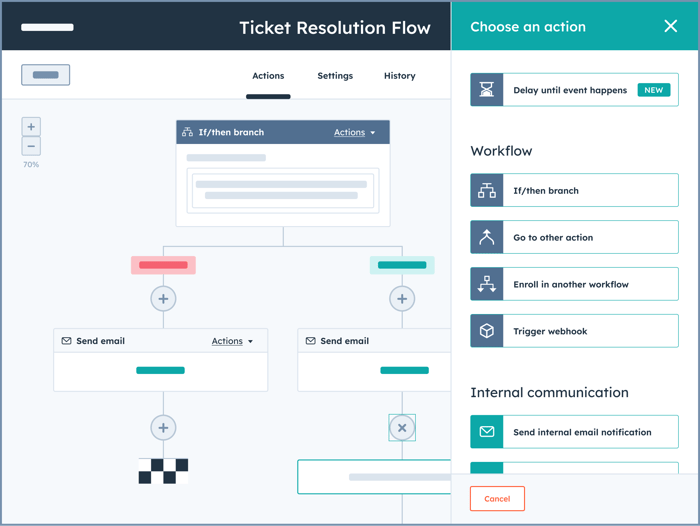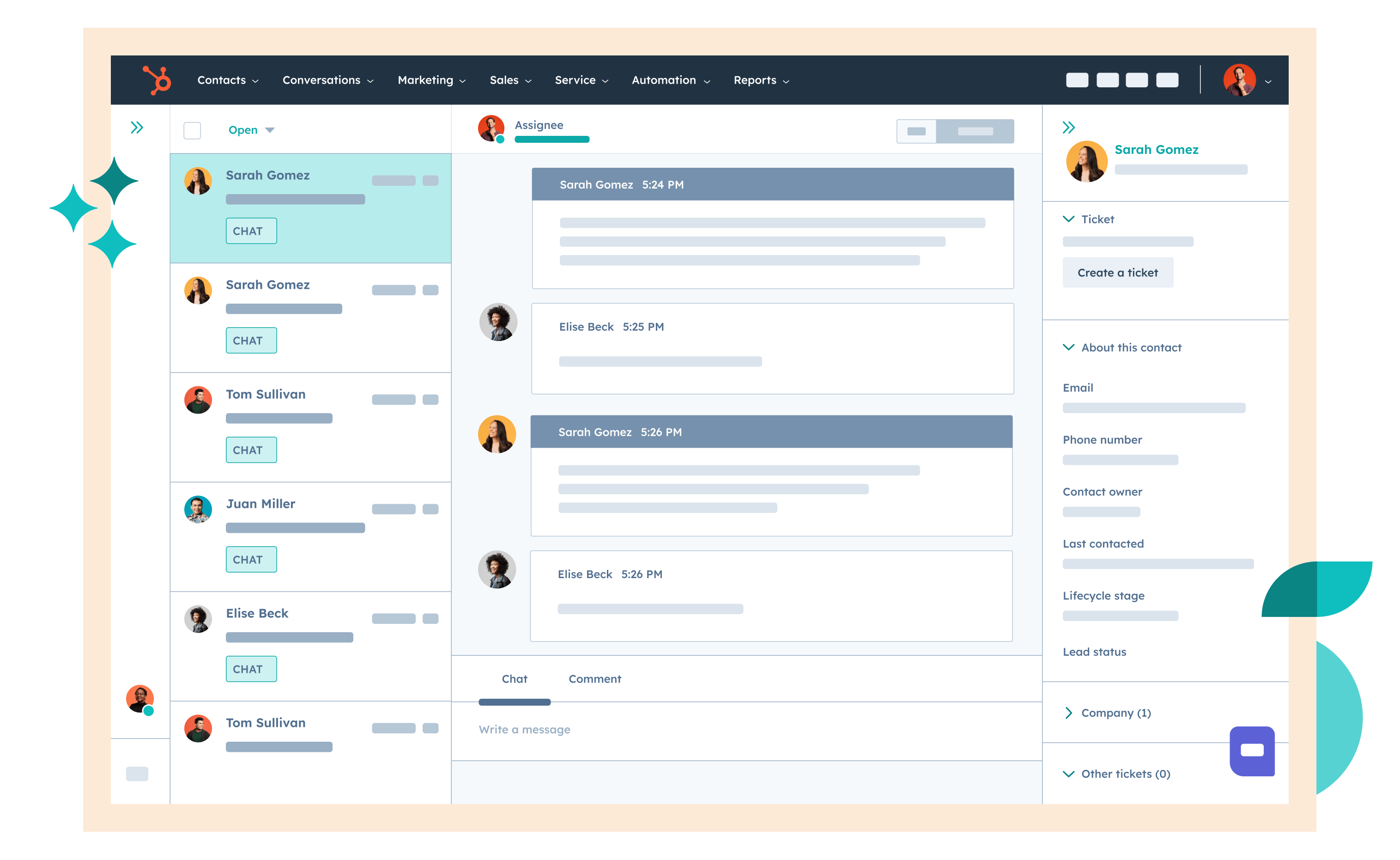
You know that the business landscape is more competitive than ever, and you believe your company has what it takes to rise above—but do you know if your customers’ sentiment backs up that belief?
A successful company not only creates a customer-centric experience but also ensures that the needs, expectations, and preferences of its customers are integrated into the core culture of the entire organization. Leaders can use customer feedback to gather data on satisfaction and sentiment and use that data to drive their companies to success by including it in their business models. This article explores how leaders can effectively track these metrics to foster business growth and improve customer relationships.
The Importance of Customer Satisfaction Metrics
In an era in which consumer choices abound, simply delivering a product or service isn’t enough. It’s the overall experience—the emotional connection—that sets successful businesses apart.
High levels of satisfaction translate to increased customer retention—also resulting in referrals and free word-of-mouth advertising—which is significantly less costly than acquiring new customers. Increasing customer retention rates by 5 percent can boost profit by 25 percent or more, according to Bain & Company. Of course, the impact of customer satisfaction goes beyond just financial gains; it also influences a business’s overall reputation and success.
When evaluating your products or services, consider customers’ satisfaction levels, experiences, and perceptions. Spikes in data represent a shifting relationship between the customer and your product or service. Companies may notice an uptick in customer satisfaction as the result of a successful product launch or expanded service offering. But companies should also be on the lookout for drops in satisfaction rates—caused by, for example, a product malfunction or clunky UX—which can lead to friction and frustration.
Companies who keep a finger on the pulse of their Customer Satisfaction Score (CSAT) understand exactly where their customers stand in terms of overall happiness. This knowledge helps companies effectively manage customer support services, increase customer engagement, and forecast customer churn.
- Customer churn rate: Calculate the percentage of customers who stop using your product or service over a specified period. Track reasons for churn to identify potential areas for improvement.
Use the following formula:
(# of customers at start of period – # of customers at end of period) / # of customers at start of period
Understanding Customer Sentiment Metrics
Knowing how customers feel should directly influence these companies’ product development, customer service, and retention strategies, ultimately impacting revenue and growth. Satisfied customers invest more in your organization by both increasing their spending and engaging in repeat services.
Tracking customer sentiment extends beyond customer-reported data points. To sustain a customer success strategy, companies must measure self-reported customer data against customer acquisition, upsell, and churn rates to determine where and when to allocate resources. How effective are your upsell strategies? What’s keeping customers engaged? And what’s the cost of losing long-time customers versus acquiring net new customers?
The following metrics will help you answer these questions and develop a clear road map for increased customer satisfaction, decreased customer churn, and more effective, more profitable customer lifetime value.
- Net Promoter Score (NPS): Evaluate customer loyalty and the likelihood of customer referrals. Predict future customer behavior, including renewal and expansion. The NPS segments customer responses into three categories: promoters, detractors, and passives.
- Customer Effort Score (CES): Asses how easy or difficult it is for customers to interact with your business.
- Retention rate: Measure the percentage of customers retained over a specified period. Higher retention rates indicate more satisfied customers. Analyze patterns among retained customers for insights.
- Customer Acquisition Cost (CAC): Calculate the total cost of gaining one new customer. To determine the average cost, companies must divide the combined total of all sales and marketing expenses by the number of new customers the business gained during a set period. The formula is as follows:
CAC = total sales and marketing costs / # of new customers acquired
- Customer Lifetime Value (CLV): Estimate the total revenue a customer generates throughout their entire relationship with the company. Successful upselling leads to higher CLV due to increased spending.
- Expansion revenue: Track the revenue generated from upselling to existing customers across products, features, and services.
- Upsell conversion rate: Measure the percentage of customers who purchase additional products or services when presented with an upsell opportunity.
Tools for Effective Metric Tracking
Not sure where to start measuring customer satisfaction? Turn to custom surveys, feedback forms, community groups, and HubSpot’s fully integrated CRM. Pay attention to customer complaints, but also find examples of repeat business and find out what brings those people back.
Effective tracking is not just about collecting data—it's about making sense of that data. Tools such as advanced analytics, CRM systems, and AI analysis can help businesses gather data for strategic planning. These tools provide valuable insights and uncover opportunities to delight your customers.
Surveys and Questionnaires
Customizable and direct, surveys are the most common tool for assessing customer satisfaction. Applications such as SurveyMonkey, Google Forms, and Typeform allow for easy data collection and analysis.
Feedback Forms
Embedded on websites or sent via emails, feedback forms are an excellent way to collect unsolicited feedback. Websites such as HubSpot's Service Hub have feedback forms that show trends and areas to improve, making it easy to analyze feedback.
HubSpot’s Service Hub
Manage customer satisfaction, pinpoint upsell opportunities, and mitigate churn risk with HubSpot’s fully integrated CRM. HubSpot’s Help Desk allows teams to access unified ticketing, omnichannel messaging, and customer feedback, all in one place. Plus, with the help of HubSpot’s AI and content assistant, your customer support teams can view AI-generated summaries of customer conversations and quickly draft responses. Thanks to HubSpot’s self-service portal, your customers gain total control over their issue resolution, which boosts overall customer satisfaction and reduces customer support overhead costs.

Third-Party CRM Integrations
Extend your reach with third-party integrations that seamlessly sync within the HubSpot ecosystem. Create forums with platforms such as Circle.so, private Facebook groups, and even custom builds to fuel customer engagement and nurture loyal brand advocates.
Customer Review Platforms
Customer reviews on sites such as Google and Yelp give important insights into how customers feel about a business.
Social Media Monitoring and Sentiment Analysis
Social media platforms are rich sources of unsolicited customer feedback. Tools including Hootsuite, Sprout Social, and Brandwatch analyze mentions, hashtags, and conversations about a brand, providing real-time insights into customer sentiment.
Analytics Platforms
Tools such as Google Analytics, Mixpanel, and Amplitude measure customer satisfaction by tracking user behavior, engagement, and conversion rates on websites and apps. High bounce rates, low engagement, or a lack of repeat usage may show where the customer experience needs improvement.
Successful leaders adopt a multifaceted approach to analyzing customer sentiment, combining cutting-edge technology with direct customer interactions, online feedback, and data analytics. The journey toward understanding and leveraging customer satisfaction and sentiment metrics is both challenging and rewarding. Businesses that use data to listen to customers find new ways to grow and create strong, long-lasting relationships with customers.

About the author
Karlina Hernandez is a passionate and creative Marketing Specialist at SmartBug Media. She’s an experienced professional with 6+ years of Marketing experience, focused on Digital, Social Media, E-commerce, and Project Management. When she's not in front of her computer, she's traveling or discovering new restaurants that offer innovative dishes and experiences. Read more articles by Karlina Hernandez.






















